Snap-fit joints are a cornerstone of modern product design and manufacturing, offering a simple yet effective means of assembling components. This article will delve into the intricacies of snap-fit design, exploring the various types, their applications, and the best practices for creating durable and functional snap-fit joints.
The Role of Snap Fits in Product Design
Snap-fit joints are a fundamental element in product design and manufacturing, renowned for their simplicity and cost-effectiveness. These joints facilitate assembly by allowing parts to be quickly and securely joined without additional fastening hardware or tools. The ease of assembly provided by snap fits not only saves time but also reduces production costs, making them a preferred choice in various industries. By eliminating the need for screws, adhesives, or other fastening materials, snap fits contribute to a streamlined manufacturing process and can also simplify maintenance and disassembly.
what-is-snap-fit?
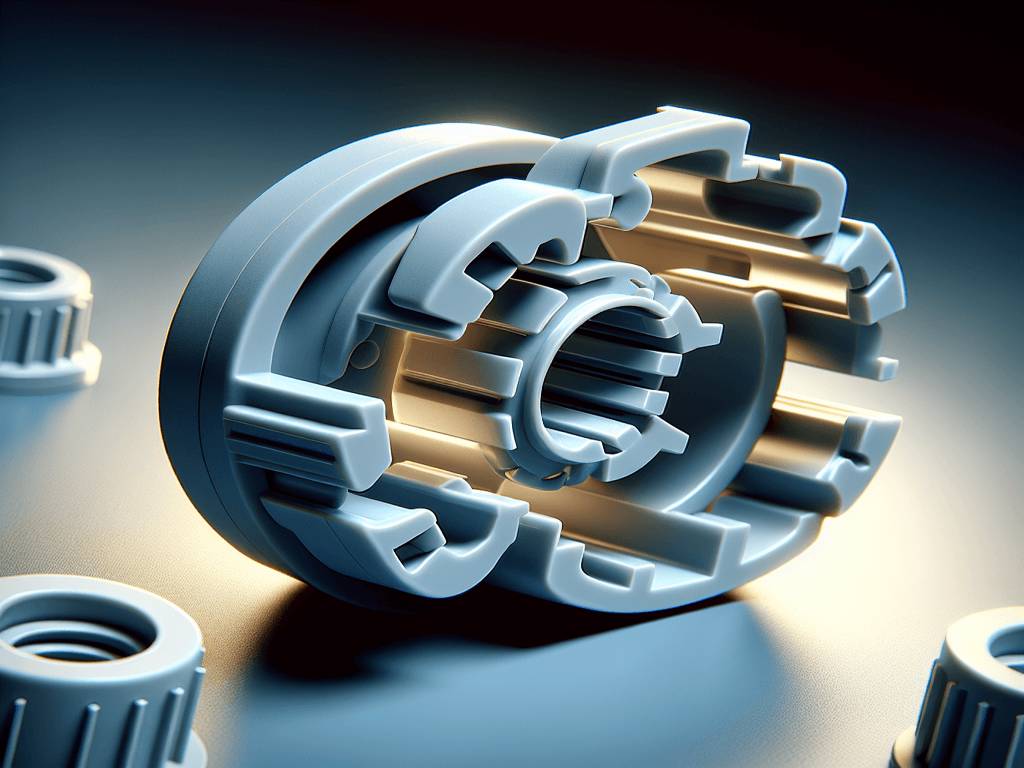
Snap-fit joints consist of interlocking components, typically featuring a protrusion—such as a hook, bead, or head—that deflects during the assembly process to engage with a corresponding part. This deflection allows for a secure and often reversible connection, particularly useful for maintenance or part replacement products. The materials used for snap fits, such as thermoplastics, nylon, ABS, and polycarbonate, are chosen for their flexibility and resilience, enabling the snap fit to withstand the strain and elasticity demands of the joining process.
Snap-fit joints are commonly found in various products, from consumer electronics to automotive components, packaging, toys, furniture, and more. Their widespread use is attributed to their ability to provide a reliable and efficient method of assembly, which is both cost-saving and design-flexible. Despite their many advantages, designers must also be aware of potential disadvantages, such as stress concentrations and tolerance issues, which can be mitigated through careful design and material selection.
Types of Snap Fit Joints
Snap-fit joints are integral to the design and assembly of many products, providing a quick and reliable method of joining components. Let’s explore the different types of snap-fit joints and their unique characteristics and applications.
Cantilever Snap Fit
The cantilever snap-fit is the most common type of snap-fit joint, featuring a cantilever arm with an interlocking feature at its free end. This design is particularly suitable for assembling two similar halves of a product casing, such as control panel modules and plastic product casings, where easy separation is necessary. The cantilever design usually has a hook at the end, which engages with an undercut on the mating part, allowing for easy assembly and disassembly.
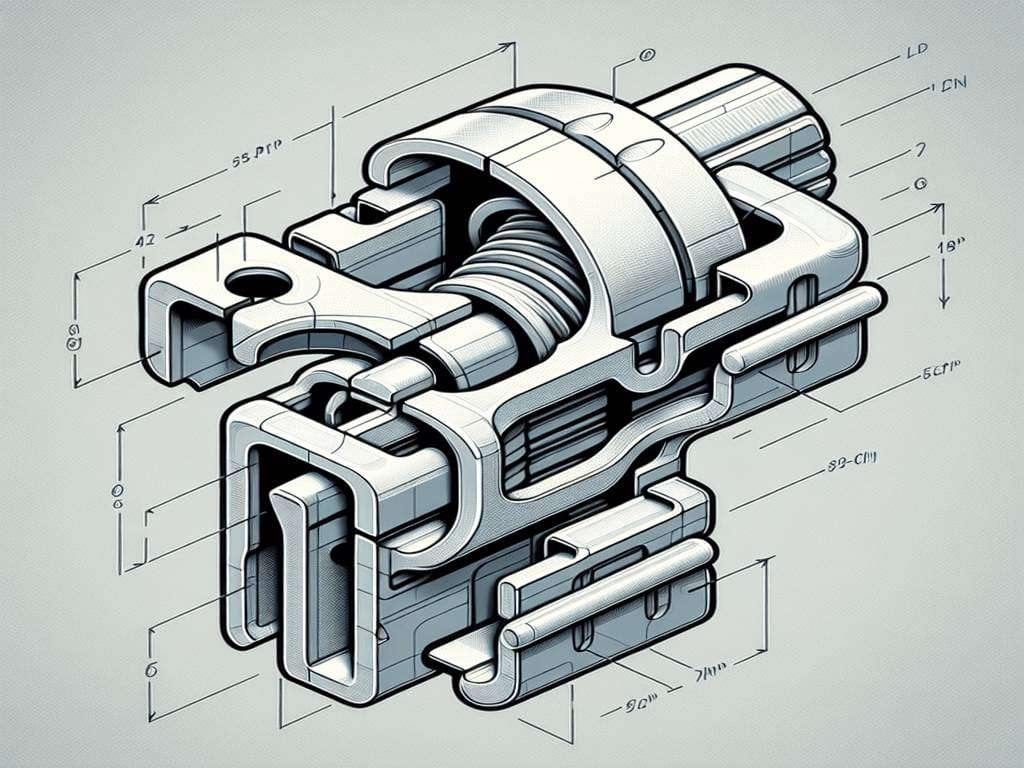
Annular Snap Fit
Annular snap-fit joints comprise a circular hoop that expands when pushed onto a matching groove. They typically join symmetrical round or cylindrical-shaped parts, such as pens, bottles with snap-on caps, plastic containers, and lamp housings. The circular geometry of annular snap fits ensures a secure connection and is well-suited for applications requiring a 360-degree seal or where rotational stability is essential.
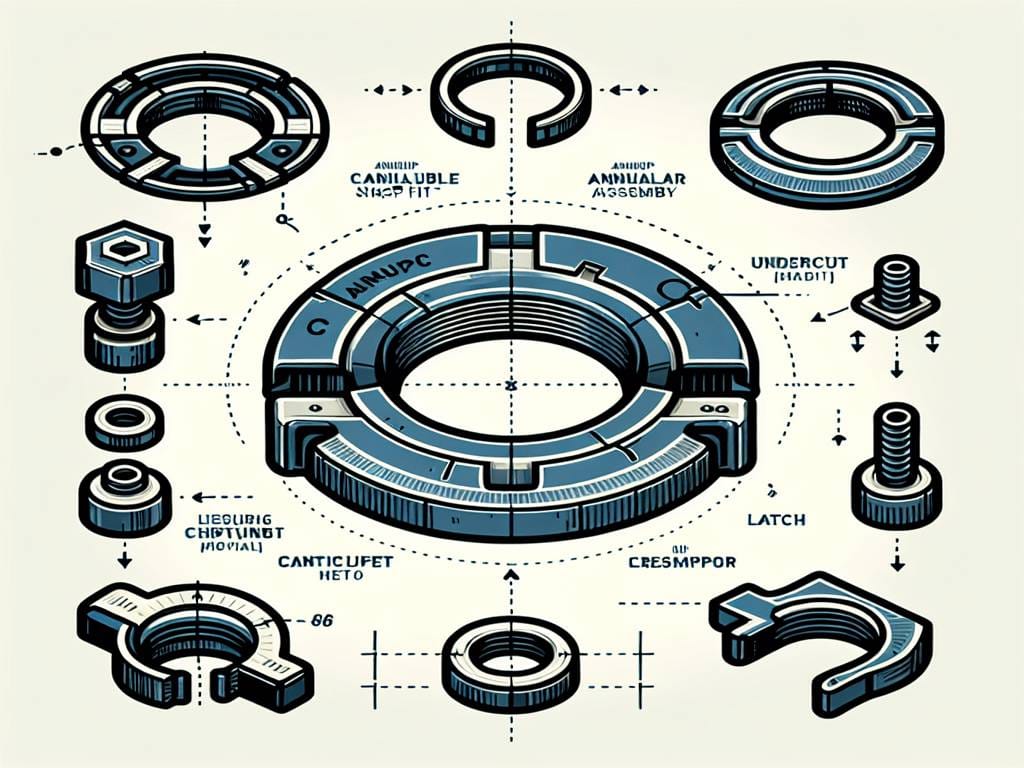
Torsion Snap Fit
Torsion snap fits are similar to cantilever snap fits but are held in position by a torsional force, often coming from a spring and bearing. These joints are ideal for fastening a hinged lid on a container or in applications requiring a rotational connection, such as caps for bottles and assemblies requiring a controlled rotational release.
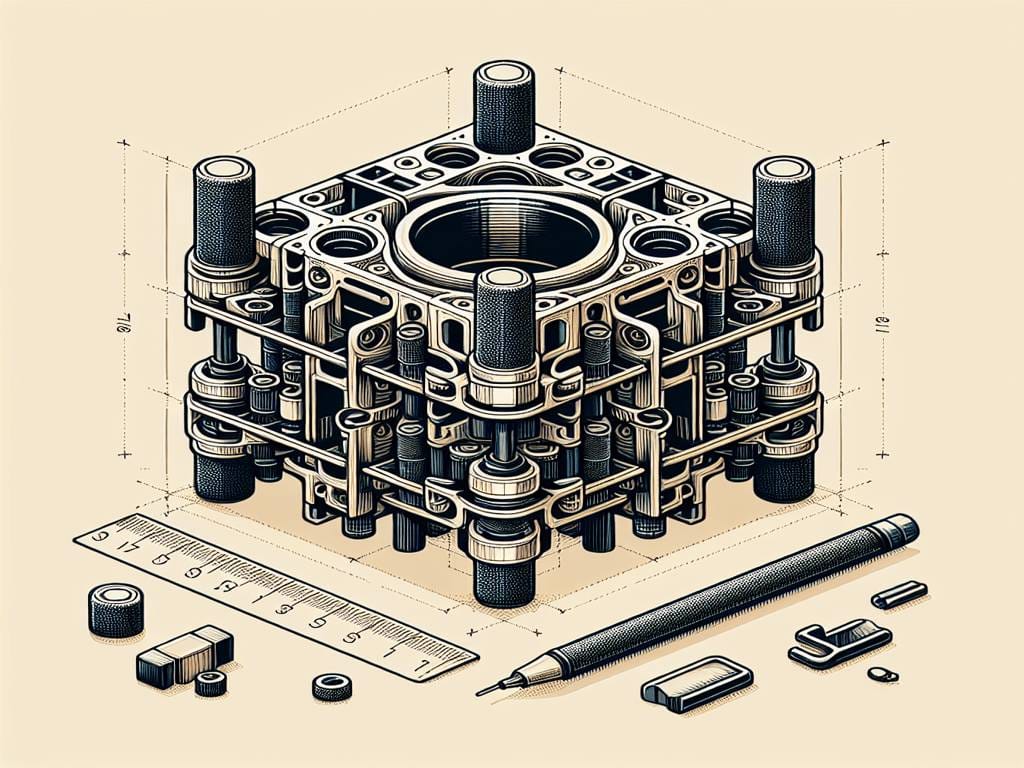
U-Shaped Snap Fit
U-shaped snap-fit joints have an interlocking element, considered a cantilever snap-fit with an arm half-folded onto itself. This design is frequently employed in product and engineering design to establish a safe and reversible connection between two components. The U-shaped configuration is built into one of the components to engage with a similar feature in the mating component.
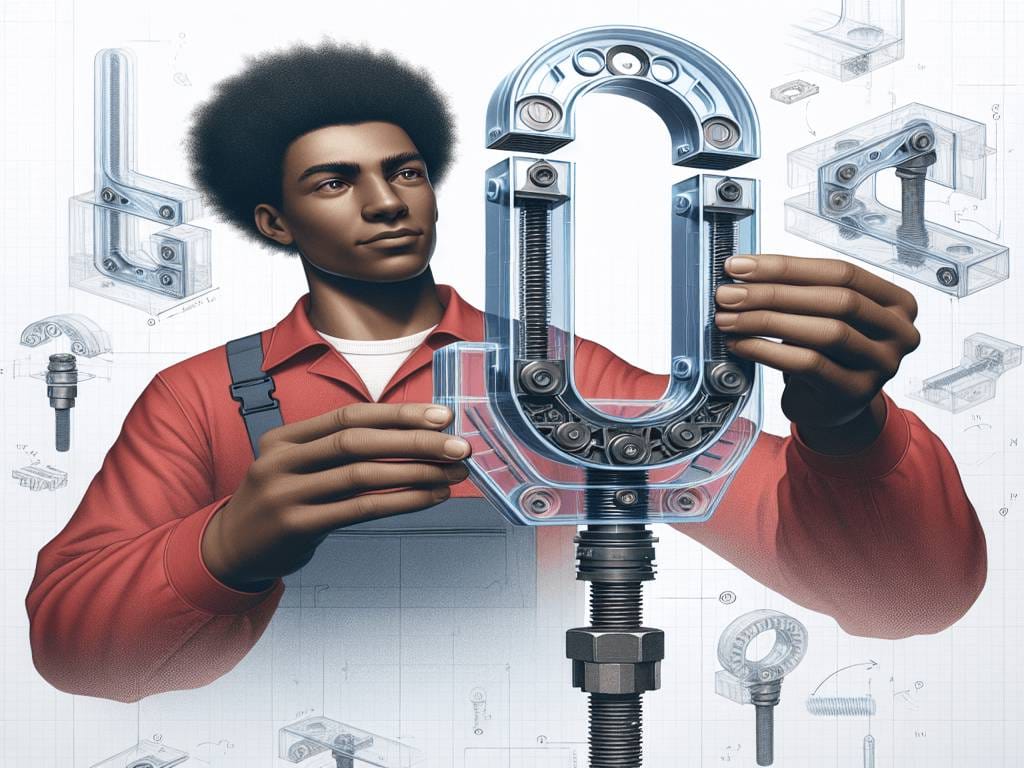
L-Shaped Snap Fit
An L-shaped snap fit is a design arrangement used to securely join two components, featuring an L-shaped geometry and usually involving one element with a projecting tab. This snap-fit facilitates easy construction and disassembly and allows for secure attachment.
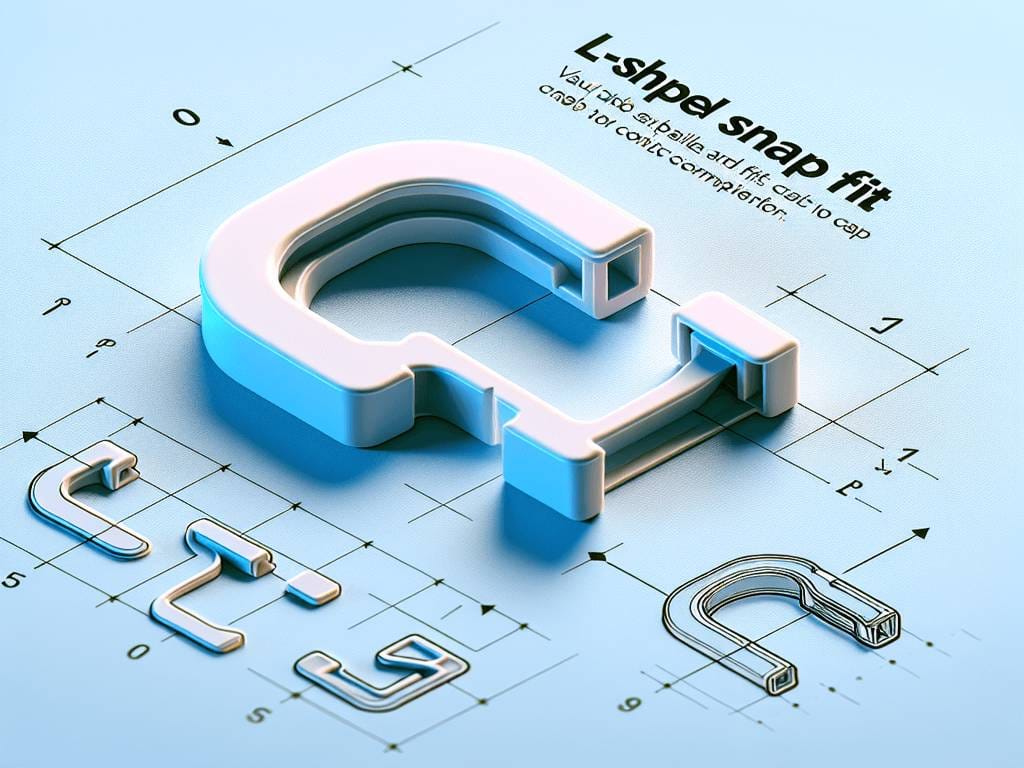
Common Problems and Limitations
While snap-fit designs offer convenience and efficiency, they can encounter issues such as stress concentration, creep, fatigue loading, and tolerance problems, affecting the fit’s long-term durability and accuracy. Although snap fits are more convenient, they are often weaker than permanent joints and are prone to breaking if not designed or used correctly.
Design Calculations and Considerations
When designing snap-fit joints, engineers must consider various technical aspects to ensure the joint’s integrity and longevity. Calculations for fatigue stress, maximum stress, and deflection force are critical to the design process, especially for cantilever snap joints, among the most common types of snap fits used in manufacturing.
Cantilever Snap Joints Calculations
For cantilever snap joints, the maximum bending stress can be calculated using the formula σmax = mc/I, where M is the maximum bending moment, C is the distance from the neutral axis to the point of interest, and I is the moment of inertia. The maximum strain is determined by ε = M/IE, with E representing the Young’s modulus of the material. Deflection, which is the displacement experienced by the cantilever arm during the engagement, is given by y=0.67 * ει²/h, where l is the length of the beam and h is the thickness at the root. The deflection force required to engage or disengage the snap-fit is calculated with P =bh²/6 • Es ε/ι, where b is the width at the root, and Es is the secant modulus.
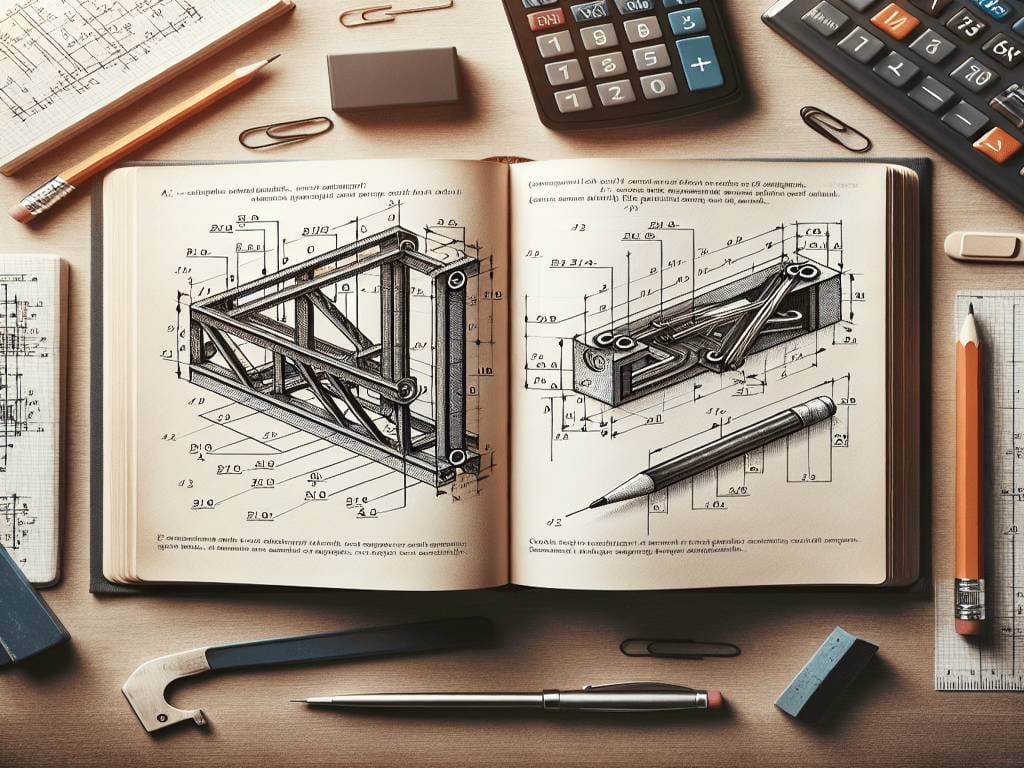
These calculations are essential for determining the appropriate dimensions and material properties for the snap-fit to function correctly without failure. For example, using ABS material, the arm’s thickness, and the recommended deflection force can be calculated using the provided formulas.
Best Practices in Snap Fit Design
Incorporating design elements such as fillets and tapers is crucial for improving snap-fit designs’ fatigue life and overall joint integrity.
Fillets
Adding fillets to the base of the cantilever helps distribute stress over a larger area, reducing the likelihood of stress concentrations that can lead to failure. The recommended fillet radius should be at least 0.5 times the thickness of the cantilever base to create a stronger connection.
Tapers
Tapering the design along the length of the snap-fit can reduce the cross-sectional area, leading to a more even distribution of stress and prolonging the joint’s life. This practice ensures using fewer materials and can help reduce material consumption.
Width and Lugs
Increasing the width of the clip adds strength to the snap-fit design, with a recommended minimum width of 5mm to achieve the right level of stiffness. Additionally, adding lugs can aid in aligning parts and transferring some of the shear force from the clips, providing structural support.
Fatigue Life
To prevent fatigue failure, selecting materials with higher-yielding strength and considering geometric factors that can influence the joint’s durability is essential.
Build Direction and Tolerance
For 3D-printed snap fits, it is advisable to consider the build direction to avoid weak joints due to the anisotropic nature of the printing process. Appropriate tolerance between interference and sliding fits ensures components work together perfectly without causing undue stress.
Applications of Snap Fit Joints
Snap-fit joints are versatile and integral to product design across various industries. Their ability to provide a secure connection without additional fasteners or adhesives makes them popular for multiple applications.
Consumer Products
Snap fits are commonly found in everyday consumer products. Toys, for instance, often utilize snap fits for their assembly, allowing for easy construction and disassembly, which is particularly useful for children’s products. Pen caps are another classic example of annular snap fits, providing a simple and effective way to secure the cap to the pen body. Battery compartment lids on electronic devices frequently employ cantilever snap fits, which can be designed for both multiple-use and permanent applications.
Industrial Uses
In the industrial sector, snap fits are used in various applications, such as enclosures for electronics like USB hubs and ethernet boxes. These enclosures often require secure yet accessible joints, which snap-fits provide. The design of snap fits allows for a mechanical joint that can be hidden, improving the aesthetic of the final product.
3D Printing
The rise of 3D printing technology has further expanded the use of snap-fit joints. 3D-printed components often feature snap fits due to their ease of assembly and reduced number of parts needed 6. Snap fits designed for 3D Printing can be easily altered, which is not always valid with traditional manufacturing methods like injection molding. Materials such as ABS, Nylon, and TPU are commonly used in FDM printing for their strain resistance, making them suitable for snap-fit connectors.
Automotive and Transportation
Snap-fit joints are also utilized in the automotive industry, where they are used in car interiors and accessories. The joints must be strong enough to withstand the weight and vibrations experienced during vehicle operation. Plastics like ABS and nylon offer high strength and flexibility in these applications.
Pa every packaging
In packaging, snap fits are used in products like Tupperware lids and snap-on bottle caps, providing a secure, easy-to-open and close closure. The design of these snap fits often involves annular or cantilever joints, which are suitable for the repeated opening and closing actions required by these products.
Medical Devices
Snap fits are also found in medical devices, where they can provide secure yet easily accessible joints for devices that may need to be opened for maintenance or battery replacement. Disassembling the device without tools is a significant advantage in medical settings.
Advantages and Limitations of Snap-Fit Design
Snap-fit joints offer a range of benefits in product design and assembly, but they also come with certain limitations that must be considered. Here’s a balanced view of the pros and cons associated with the snap-fit design.
Advantages of Snap-Fit Design
Ease of Assembly
- Quick and Efficient: Snap fits allow rapid assembly, reducing labor costs and manufacturing time.
- Tool-Free: They typically do not require additional tools or equipment for assembly, making them user-friendly.
Cost-Effectiveness
- Reduced Material Costs: Snap fits often eliminate the need for additional fastening hardware such as screws or adhesives.
- Lower Production Costs: The simplicity of snap-fit design can lead to lower production costs than other fastening methods.
Durability and Reliability
- Strong Connections: When appropriately designed, snap fits can create solid and secure joints.
- Longevity: High-quality materials and good design can result in snap fits that last through many cycles of disassembly and reassembly.
Design Flexibility
- Aesthetic Integration: Snap fits can be seamlessly integrated into product designs, contributing to a clean and uncluttered appearance.
- Material Versatility: They can be designed with various materials, including plastics and metals.
Sustainability
- Recyclability: Products with snap fits can be easily disassembled for recycling or repair, supporting sustainability efforts.
Limitations of Snap-Fit Design
-
Material Stress: Snap-fit design can lead to material stress, especially during assembly and disassembly. The forces exerted on the snap-fit components can cause strain and deflection, which may lead to material fatigue over time. The maximum strain often limits the dimensions of the snap-fit design during deflection rather than the force required for assembly or disassembly.
-
Stress Concentration: Snap fits can create localized stress points. These stress concentrations can lead to material failure, especially if the material is not designed to withstand such stress.
-
Wear and Tear: Repeated use can wear down the snap-fit features. This is particularly true if the material is not suited for high-cycle applications. Over time, wear and tear can affect the performance and reliability of the snap-fit joint.
-
Limited Load-Bearing Capacity: Snap fits may have limitations when bearing heavy loads or withstanding significant forces. It’s important to carefully evaluate the application’s requirements and ensure the snap-fit design can handle the expected loads.
-
Material Limitations: The snap-fit design is most commonly used with plastic components. However, certain types of plastics may not be suitable for snap-fit applications due to their low flexibility or brittleness. It requires careful consideration of material selection, geometry, and clearances.
-
Complex Production Process: While snap-fit joints offer many advantages, they also have a complex production process. This can include multiple iterations of design changes to ensure the snap-fit has a lower allowable strain for a given material.
-
Design Tolerances: Real-world changes in dimensions due to manufacturing variations and design tolerances need to be considered. These can affect the performance of the snap-fit joint.
Design Complexity
-
Design Complexity: Designing effective snap fits can be challenging, especially for complex geometries. It requires precise calculations and tolerances, which can be complex and time-consuming. Even slight variations in component dimensions or tolerances can affect the fit and functionality of the snap-fit.
-
Precision Required: Snap-fit design requires precise control over manufacturing processes to ensure consistent and reliable snap-fit connections. This precision is necessary to prevent tolerance problems that may compromise the accuracy of the fit.
-
Limited Adjustability: Once a snap fit is designed and manufactured, there is little room for adjustment without significant rework. This can add to the complexity of manufacturing and potentially increase costs.
-
Tolerance Issues: Tolerance problems may occur and compromise the accuracy of the fit. This requires precise control over manufacturing processes to ensure consistent and reliable snap-fit connections.
-
Complex Production Process: The production process for snap-fit joints can be complex, adding to the overall manufacturing complexity. This can potentially increase the time and cost of production.
-
Material Limitations: The performance of snap-fit designs heavily depends on the material used. The material needs to have the right balance of strength and flexibility to withstand distortion beyond the elastic limit of the snap-fit and to enable the deformation necessary for the snapping process.
Assembly and Disassembly
The snap-fit design is famous for assembling components because of its efficiency, cost-effectiveness, and flexibility. However, it does come with certain limitations that need to be considered:
-
Assembly and Disassembly: The process of assembling and disassembling snap-fit components can be complex and requires careful handling. Incorrect assembly or disassembly can damage the snap-fit features, leading to a loose fit or joint failure. This can compromise the integrity of the product and may require costly repairs or replacements.
-
Potential for Damage: Snap-fit components are subject to wear and tear, especially with repeated assembly and disassembly. Over time, this can lead to material fatigue and potential failure of the snap-fit joint. This is particularly true if the material is not suited for high-cycle applications.
-
User Difficulty: Some snap fits may be difficult for the end-user to separate, especially if they are designed for permanent closure. This can lead to user frustration and potential damage to the product if the user attempts to force the separation.
-
Precision Required: Snap-fit design requires precise calculations and tolerances, which can be complex and time-consuming. This precision is necessary to ensure a secure fit and proper function of the snap-fit joint.
-
Limited Adjustability: Once a snap fit is designed and manufactured, there is little room for adjustment without significant rework. This can limit the flexibility of the design and potentially increase costs if adjustments are needed.
Environmental Factors
Snap-fit design is a standard method used in manufacturing to assemble products quickly and securely. However, it does come with certain limitations:
-
Environmental Factors: The performance of snap-fit designs can be affected by environmental factors such as temperature and chemical exposure.
-
Temperature Sensitivity: Materials used in snap fits may be sensitive to temperature changes, affecting their performance and durability. For instance, exceeding a material’s heat deflection temperature can cause it to distort, and prolonged exposure to heat, while subjected to a load or force, can cause the plastic to deform or creep over time. Also, certain materials may exhibit drastic and discontinuous changes in their physical properties with temperature.
-
Chemical Exposure: Certain chemicals can degrade the materials used in snap fits, compromising the joint integrity. The ability to retain the properties of a material is strongly affected by reactive environments leading, for example, to oxidation, erosion, molten metal or salt corrosion, or irradiation damage.
Application Specificity
Snap-fit design is a standard method used in manufacturing to assemble products quickly and securely. However, it does come with certain limitations:
-
Application Specificity: Snap-fit designs are often specific to particular applications and may not be transferable to different products or uses. This means that each new application may require a unique snap-fit design, which can increase the time and cost of product development.
-
Load Limitations: Snap fits are unsuitable for all load-bearing applications, especially where high strength or impact resistance is required. While snap fits can be designed to handle a certain amount of load, they may not be the best choice for applications that can withstand high forces or impacts.
-
Environmental Factors: The performance of snap-fit designs can be affected by environmental factors such as temperature and chemical exposure. Materials used in snap fits may be sensitive to temperature changes, influencing their performance and durability. Additionally, certain chemicals can degrade the materials used in snap fits, compromising the joint integrity.
Expert Insights on Snap Fit Design
LongSheng, a CNC machining Manufacturing Engineer with extensive experience in the tech industry, has shared valuable insights on snap fit design, engineering principles, machining characteristics, and surface finishes. LongSheng CNC machining Manufacturing emphasizes the importance of understanding the specific application and material properties when designing snap fits.
Snap-fit designs are not one-size-fits-all. They are often specific to particular applications and may not be transferable to different products or uses. This means that each new application may require a unique snap-fit design, which can increase the time and cost of product development. Therefore, understanding the specific application and requirements is crucial in the design process.
Material selection is another critical aspect of snap-fit design. Different materials have different properties, and the choice of material can significantly impact the performance and durability of the snap-fit. For instance, plastics or thermoplastics are generally susceptible to creeping, a gradual deformation when the materials are under stress. Over time, this can compromise the connection between components.
Regarding machining characteristics, snap-fit design requires precise control over manufacturing processes to ensure consistent and reliable snap-fit connections. This precision is necessary to prevent tolerance problems that may compromise the accuracy of the fit. When gaps are not rightly placed, tolerance issues may occur, causing components not to fit perfectly.
Surface finishes also play a crucial role in snap-fit design. A high-glossy mold finish does not necessarily translate to a high-glossy finished product. It is significantly subject to other factors, such as the plastic resin used, molding condition, and mold design. For example, ABS will produce parts with a higher glossy surface finish than PP.
LongSheng CNC machining Manufacturing experiences with injection molding and CNC machining projects have further reinforced these insights. LongSheng CNC machining Manufacturing has found that understanding the principles of snap-fit design, material properties, and manufacturing processes can significantly enhance the success of these projects.
Further Learning and Resources on Snap Fit Design
For those interested in expanding their knowledge on snap-fit design, here are some additional resources that provide a deeper understanding of the subject:
-
DeepDive: This system uses machine learning to cope with various forms of noise and imprecision. It’s designed to make it easy for users to train the system through low-level feedback and rich, structured domain knowledge. While not directly related to snap-fit design, deep learning, and data analysis principles can be applied to optimize the design process.
-
IDEO Design Thinking: This resource provides insights into how design thinking can be applied to solve real-world problems. It includes articles and videos that explore the value of design thinking in business and innovation.
-
Deep Dive into Business: This resource provides real-life examples of how deep dives can be used to analyze business performance. It emphasizes the importance of producing signals, not noise, and provides guidelines on effectively communicating deep-dive data.
-
Dive into Deep Learning: This book comprehensively introduces deep learning. It covers many topics, including reinforcement learning, Gaussian processes, and hyperparameter optimization. The principles and techniques discussed in this book can be applied to optimize snap-fit design.
-
Profound Dive Case Studies: These case studies provide practical examples of how deep dives can be used to analyze and solve problems. They include worked calculations and design tools that can be used to optimize snap-fit design.
-
Knowledge Graphs: This resource provides a deep dive into the theories and applications of knowledge graphs. It explains how knowledge graphs differ from average graphs and provides examples of how they can be used in real-world applications.
-
Deep Dive Definition and Examples: This resource provides definitions and examples of deep dives. It explains how deep dives can be used to explore a problem, generate ideas, and develop solutions.
Conclusion: The Significance of Snap-Fit Design
Snap-fit design is crucial in modern manufacturing, offering a cost-effective and efficient method for assembling components. It provides significant performance and aesthetics, allowing for the creation without the need for exposed fasteners or complex assembly processes.
However, snap-fit design is not a one-size-fits-all solution. It requires careful consideration of various factors, including the specific application, material properties, environmental conditions, and load requirements. Each snap-fit design is unique and must be tailored to the particular needs of the product or use case.
Designing for snap fits is a complex and iterative process. Still, by following engineering best practices, it’s possible to improve the initial function of snap-fit joints and decrease prototyping life cycles. This includes considering the build direction, ensuring appropriate tolerances, selecting suitable materials, and designing for manufacturability.
Despite the challenges, the benefits of snap-fit design are clear. It allows for quick and secure assembly, enhances the aesthetic appeal of products, and can significantly reduce manufacturing costs. By understanding the principles of snap-fit design and applying them effectively, manufacturers can create durable, reliable, and high-quality products.
FAQs
Can snap-fit joints be used with metal?
Yes, snap-fit joints can form metal-to-metal connections, but precision is crucial for these types of joints. CNC machining is often employed to achieve the necessary precision.
What are the typical applications of snap-fit joints?
Snap-fit joints are widely used in consumer electronics, packaging, automotive parts, toys, medical devices, and 3D printing designs and prototyping.
What materials are suitable for snap-fit joints?
The most common materials for snap-fit joints are plastics like ABS, PETG, Nylon, and PLA due to their flexibility and ease of molding. Thermoplastics, nylon, ABS, and polycarbonate are also used for their impact resistance, affordability, durability, and adaptability.
What are the best practices for snap-fit design?
Best practices for snap-fit design include adding fillets to distribute stress, tapering the design to reduce material usage, increasing the width of the clip for strength, and considering the build direction to avoid weaker designs.
How do you calculate the design tolerance for snap-fit joints?
Tolerances for snap-fit joints vary depending on the type of printer and manufacturing method. For FDM 3D printing, a tolerance of 0.5mm is recommended, while for SLA, SLS, and MJF, a tolerance of 0.3mm is suggested.
What are the types of snap-fit joints?
The three most common types of snap-fit joints are Cantilever Snap Joints, Torsion Snap Joints, and Annular Snap Joints, each with unique designs and applications.
What are the challenges in snap-fit design?
Challenges in snap-fit design include stress concentrations, creep, repetitive or fatigue loading failure, and tolerance issues.
Are snap-fit joints durable?
Snap-fit joints can be long-lasting if designed with correct calculations and tolerances. Proper material selection, precise design, and periodic checks can prolong the life of snap fits.
Can snap-fit joints be disassembled?
Snap-fit joints can be permanent or detachable, depending on the type of undercut and assembly. An angle B that varies from 45° to 60° is usually used for detachable joints, while for permanent connections, B = 0° or is even harmful.
How does the space available affect snap fit design?
The “snap-fit arm” needs a certain length to spring. A rule of thumb is that the length of the snap-fit arm should be at least 12 times the wall thickness. The longer the arm, the better it can spring within the material’s range of elasticity.


